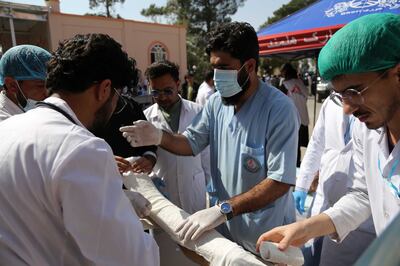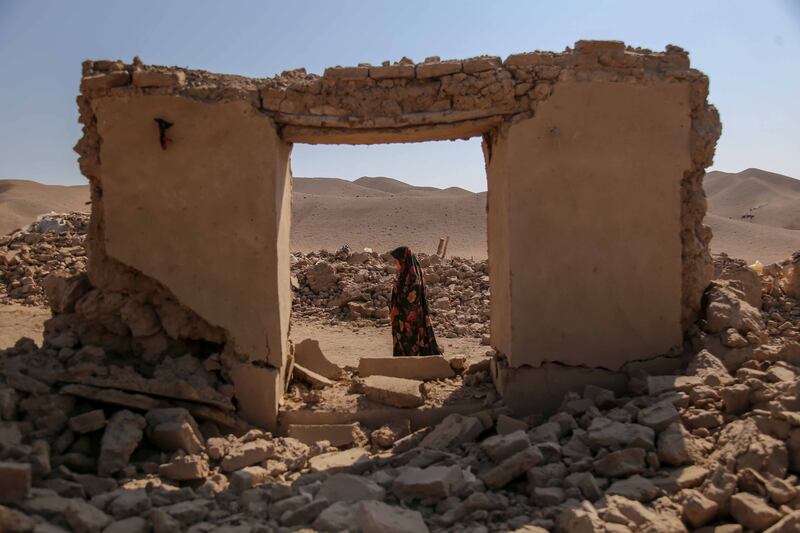The stark number of dead and injured from this week’s two 6.3-magnitude earthquakes in north-west Afghanistan’s Herat province leaves us with just a glimpse of the latest tragedy that has befallen the Afghan people. It is the grim particulars of families torn apart, buildings reduced to rubble and people’s struggle to survive that reflects the true scale of the devastation.
In Zinda Jan district, 40km from Herat city and one of the worst-hit areas, survivors and volunteers told The National they were using bulldozers to hollow out the earth and bury hundreds of victims. Madina Jamil, a resident of Herat city who is volunteering in Zinda Jan, said entire families perished and, in some cases, “10 or even 15 members of one family were found dead”.
“It is a tragic sight to pull out people from under the rubble and then bury them again," Mr Jamil added.

Reports suggest anywhere between 1,000 to 2,000 people may have died in the quakes and subsequent aftershocks although much remains unknown about the full extent of the devastation and death toll, because the country’s Taliban rulers are unlikely to have comprehensive population records for the area. What can be surmised however, is that this kind of disaster is a distressing reminder of the urgent need to find an effective political, operational and financial understanding with Afghanistan’s current administration.
Although several countries are supplying aid – including the UAE, which on Tuesday sent a plane carrying 33 tonnes of urgent food supplies – Afghanistan’s continuing international isolation and the withholding of billions of dollars’ worth of state funds arguably leaves the poverty-stricken population more vulnerable than it needs to be. Similarly, the Taliban’s often-testy relationship with many international NGOs has also left people to the mercy of natural disasters – and Afghanistan is certainly no stranger to earthquakes.
As well as the immediate destruction and loss of life this week, such disasters also fuel Afghanistan’s migration crisis, which is being exacerbated by neighbouring Pakistan’s deadline for undocumented Afghan refugees to leave by the end of the month. Many breadwinners will have perished in the earthquakes, posing a long-term problem for many families.
As we have seen with similarly devastating earthquakes in Turkey and Syria, it will take years to rebuild and for a war-torn country such as Afghanistan that lacks major international donor support, the suffering will be unnecessarily dragged out. Winter is approaching and displaced families will need food and shelter – who is going to pay for and supply it? Sadly, there has been a relative lack of international financial support so far, although China is reported to have donated $200,000 through Afghanistan’s foreign ministry.
The timing of the deadly earthquakes coincides with the Israel-Gaza war, meaning Afghanistan is once again not getting the attention it deserves. However, the earthquakes are a brutal reminder of the human cost of unimaginative diplomacy, obstinate governance and a failure to embrace pragmatism. The Taliban needs to work better and more closely with NGOs offering help. Similarly, potential donor countries need to come up with more creative ways of supporting Afghanistan’s people, not just in times of crisis, such as this one, but in the years ahead.





